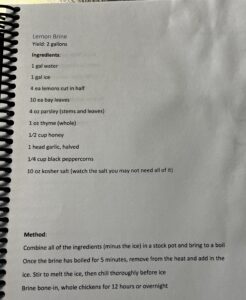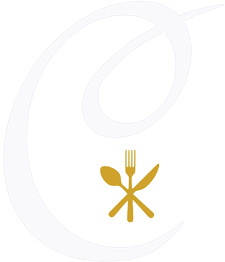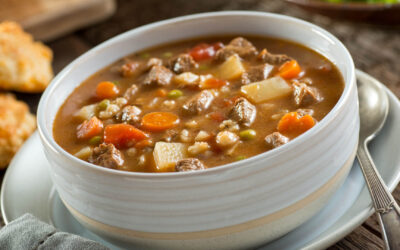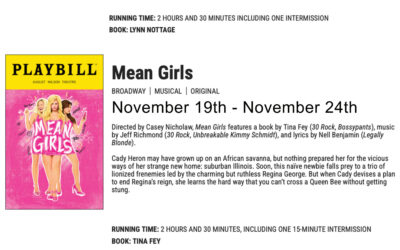Although Cuisine Restaurant is not open on Thanksgiving Day, that doesn’t mean it’s the Chef’s day off.
Anything but.
Of all the holidays on the calendar, this is one holiday that puts Chefs to work, whether it’s in their professional kitchen or in their home kitchen.
It’s on this day, that their measure of skill and expertise, whether judged by their customers, or their family, is often measured by just one dish.
The turkey.

The “big bird” is the center piece of nearly everyone’s dinner table on Thanksgiving and the best way to cook it is the subject of network TV, foodie magazines and office “water cooler” conversation, weeks before the main event.
And it’s this time of year that Chefs are called upon to provide what amounts to a Culinary PSA on the best practices for buying, prepping, roasting and serving a turkey.
Truthfully, I don’t think they mind.
Kinda makes em feel special.
Of course, Chef Paul Grosz is not immune to this discourse so we spent some time with the Chef to discover some of the his most important tips and advice so that you can benefit from this decades of turkey trials, tribulations and successes.
Is all starts with the buying.
The vast majority of people buy a frozen turkey at the grocery store and there are dozens of brands to choose from and many different ways it has been grown, handled and processed.
The terminology can be confusing.
Fresh means the bird has been kept at 26 degrees or above. Frozen means it has been held at o degrees or below and will be frozen solid. Natural means the turkey has not been injected with artificial moistening or flavoring agents. Free Rangemeans the bird has had access to the out of doors. Organic means it’s fed an organic diet and free of antibiotics. Kosher (beyond its religious processing) means the turkey is always brined (soaked in water and salt), which, as a result, can help make it more moist.
All of these are terms are helpful, and as a Kosher turkey (by definition) is expected to also be “free range”, “with a grain diet” and given no antibiotics”, this, with the addition of it being brined seems to check all the boxes.
It does however, mean that doing a second brining at home, is a salt over load and should be avoided.
Bottom line, if you can buy a fresh turkey and brine it yourself, it is probably your best choice.
If you’re are buying a fresh turkey, buy it a day or two before roasting and keep it in the coldest part of your refrigerator.
Thawing a frozen turkey.
A frozen turkey should be kept frozen until you are ready to defrost it. Submerge your frozen turkey (leave it in its wrapper), in a sink of cold water. Change the water often so that it remains cold. Figure about 30 minutes of underwater time per pound (about 10 to 12 hours for a 20 lb. turkey).
You can also defrost your turkey in the refrigerator. Estimate about 24 hours for every 5 lbs. or about 4 days for a 20 lb. turkey.
Now what? Some prep work and some brining.
The day before Thanksgiving, once your fresh turkey is purchased, or, your frozen turkey is FULLY thawed, unwrap it and then pull out the giblets and neck from the body and/or neck cavities.
Everything but the liver is good for making the stock. You can sauté the liver, dice it, and add it to the stuffing or roast it, mash it and mix it into the gravy for additional flavor.
Here is where you can make a big difference in your outcome.
Brining.
Chef Paul is a BIG fan of brining and you should be too.
Chef Paul’s Lemon/honey brine is his go-to favorite and he agreed to share it with us.
“It’s a perfect combination of sugars, acid and turkey fat doing their chemical reaction when roasting.” Paul says.
This 2-gallon batch is just enough and should allow you to fully submerge a large turkey.
We thought it would be nice that you see it directly from Chef Paul’s own notebook.

Lemon Brine
1 Gallon Warm Water
1 Gallon Ice
4 each Lemons, Cu in Half
10 each Whole Bay Leaves
4 ounces Fresh Parsley (Stems and Leaves)
1 ounce Fresh Thyme
1/2 Cup Honey
1 Head Garlic
1/4 Cup Black Peppercorns
10 oz Kosher Salt (Watch the salt, you may not need all of it)
Method:
- Combine all of the ingredients (minus the ice), in a stock pot, and bring to a boil.
- Once the brine has boiled 5 minutes, remove from the heat and add in the ice.
- Stir to melt the ice, then chill throughly.
- Brine bone-in whole chickens or turkey for 12 hours or overnight.
Seasoning
After brining, you can choose from a number of options.
Two of the more popular are seasoning methods are “Topical” (applied to the surface) and “Self-Basting”, under the skin.
For a traditional topical seasoning, brush the exterior of the turkey with melted butter and add sprinkle a seasoning mixture of paprika, garlic powder, poultry seasoning and ground black pepper.
Avoid adding salt in your seasoning mix as your turkey has already been brined with a salt solution.
For a self-basting turkey, prepare a softened butter mixture using unsalted butter and the same seasoning mixture.
The easiest way to add the butter is to loosen the skin from the meat by working your hand from the neck cavity across the breast and over the thigh. Use your hands to rub the softened butter mixture under the skin and over the meat.
Once coated, you may still want to rub a little of the mixture over the skin to protect the skin and help it to color nicely.
To stuff or not to stuff? That is the question.
Professional Chef’s, working in a professional kitchen, rarely, if ever stuff a turkey for a number of reasons, among them is that the local board of health isn’t too keen on that idea.
But beyond that, there is an even bigger reason.
You’ve probably heard the expression that the human body is comprised of 60 to 75% water.
Turkeys, like most meats, are composed primarily of water too.
As a result, when you roast a stuffed turkey, you’ve got 3 things working against you if your goal is a moist and tender turkey breast.
1). Hot air (your oven) tends to dry the bird as it cooks. You just can’t avoid that.
2). Gravity wins. The juices from the breast go downward into the stuffing or to the bottom of the roasting pan.
3). Your stuffing acts like a sponge and soaks up those juices. Great stuffing, dry turkey.
So, what do Chef’s do?
Instead of stuffing your bird with bread stuffing, prepare a mixture of 2 parts Onion, 1 part Carrot and 1 part Celery.
Chef’s call this mixture a mirepoix.

Make enough mirepoix to stuff the inside cavity with a little room to spare. Also, place a sprig or two of fresh thyme and a few cracked peppercorns for additional flavor.
This vegetable medley will kind of self-baste the interior cavity of the bird with aromatics and also contribute to a much tastier gravy later.
Prepare your favorite stuffing recipe and place in an oven safe glass or earthenware container.

Consider adding additional strong turkey or chicken stock, and milk or other moist ingredients but do not bake it until your turkey is in the oven and about half-way roasted.
Place the turkey on a roasting rack resting above the bottom of the pan. Roast the turkey at 325 degrees, about 15 minutes per pound is a decent estimate of time.

For the first half to two thirds of its roasting time, leave it breast up, then, the last one third of the time, remember the gravity issue, breast down.
While turning the bird upside down, extract some of the juices and instead of using all of them to baste the turkey, baste the stuffing instead.
When is it done?
The Pro’s don’t rely on those little plastic thermometers you see stabbed into the breast meat. Generally, they’re not very reliable.
Use an insta-read thermometer or other reliable meat temperature probe instead.

Kitchen thermometer on white background
You’re looking for 165 degrees when inserted it into the “pocket” between the breast and the thigh but be careful not to insert it next to the thigh bone (which will give you a slightly higher temperature reading).
When you’ve achieved 165 degrees, remove the turkey from the oven, turn the turkey back to breast side up and allow it to rest at least 15 minutes for all the juices to equally distribute throughout the meat. You may even see the temperature creep up a few more degrees. That’s what Chef’s call “carry over cooking”. And that’s all good.
At this time, you’re welcome to stuff the cavity of your beautifully roasted turkey with your cooked stuffing before placing it on a presentation platter.
All of us at Cuisine hope that you have a wonderful Thanksgiving Day and that your turkey is the best ever!



